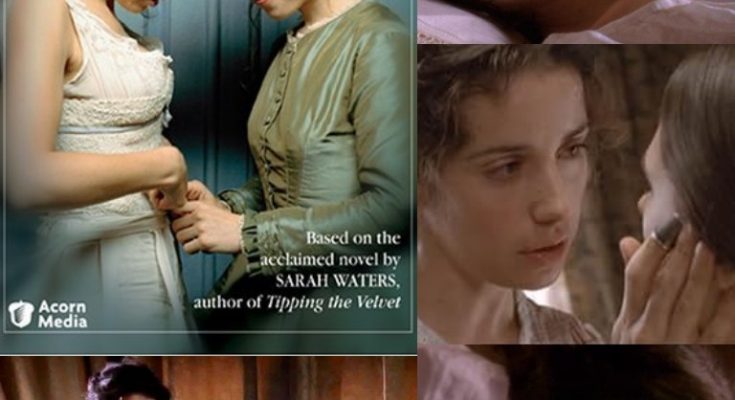Fingersmith (2005) – Official Review
“A twisted tale of deceit, betrayal, and love, Fingersmith is a masterclass in suspense that will leave you breathless.”
In a world dominated by deception and intrigue, Fingersmith stands as one of the most intricate and thrilling dramas ever adapted for the screen. Based on the novel by Sarah Waters, this 2005 adaptation is a gripping and emotionally charged tale set in Victorian England, where love, betrayal, and crime intertwine in the most unexpected of ways. Directed by Park Chan-wook, Fingersmith explores the dark side of human nature with a story that twists and turns at every corner, keeping its viewers on the edge of their seats.

Plot Summary
The story of Fingersmith revolves around two young women, Sue Trinder (played by Sally Hawkins) and Maud Lilly (played by Imelda Staunton), whose lives become intertwined through a series of deceitful and treacherous acts. Sue is raised in a den of criminals, while Maud, a wealthy orphan, is drawn into a web of lies spun by a conman named Gentleman (played by Matthew Macfadyen).
Sue, a pickpocket, is recruited by Gentleman to be part of a plot to defraud Maud out of her inheritance. The plan involves Maud being tricked into marrying Gentleman, all while Sue is tasked with being Maud’s maid, setting the stage for a devastating betrayal. However, as Sue gets closer to Maud, she begins to question her loyalties and develops a forbidden and complex emotional attachment to her. As the layers of deception unfold, both women are forced to confront the dark realities of their lives, including their identities and the roles they are expected to play in society.
The film dives into the themes of manipulation, revenge, and the power of women who refuse to be defined by the men who control them. What begins as a story of simple deceit quickly becomes a web of psychological complexity, full of shocking twists and turns that will leave the audience questioning everything they think they know about the characters.

Artistic Analysis
Fingersmith is a triumph of visual storytelling. Park Chan-wook’s direction is meticulous, blending the gothic, oppressive atmosphere of Victorian England with the intricate, fast-paced tension of the narrative. The camera work is precise, with many scenes shot in tight, confined spaces that echo the emotional entrapment the characters experience throughout the film. Every scene is beautifully composed, from the gloomy streets of London to the luxurious yet cold manor houses, highlighting the stark contrast between the world of the wealthy and the downtrodden.
The soundtrack, composed by Chung Ho-joon, complements the film’s tense atmosphere perfectly, moving between melancholy strings and sudden, sharp notes that reflect the plot’s dark twists. The music becomes an essential element in heightening the suspense, underscoring the emotional stakes of the characters as they navigate their treacherous paths.
The film’s aesthetic is striking – the clothing, settings, and visual cues all speak to the period while also enhancing the overall mood. The muted colors of the 19th-century world contrast sharply with the vibrant emotions and deep psychological drama unfolding within the characters.

Performances
The cast delivers standout performances across the board, with Sally Hawkins and Imelda Staunton leading the charge as the two women at the heart of the story. Hawkins plays Sue with a mixture of toughness and vulnerability, portraying a woman caught between her loyalty to a criminal life and her growing feelings for Maud. Her performance is both subtle and captivating, capturing the internal conflict that defines Sue’s journey.
Imelda Staunton as Maud Lilly brings an exquisite depth to her character, capturing the essence of a woman trapped by circumstance yet yearning for something more. Staunton’s portrayal is restrained yet emotional, and she masterfully conveys Maud’s transition from a naive, unsuspecting victim to a woman who takes control of her own fate.
Matthew Macfadyen as Gentleman plays the role of the charming yet manipulative conman with chilling precision. His cold demeanor and calculated actions give him a menacing presence that lingers throughout the film. The chemistry between the characters is electric, and the tension between Sue and Maud is palpable, building to a crescendo that will leave the audience spellbound.
Emotional Weight
At its core, Fingersmith is a story about identity, betrayal, and the complex nature of love. The film explores how the characters are shaped by the circumstances in which they find themselves and how their pasts haunt their every decision. The emotional weight of the film comes from the slow unraveling of the characters’ lives, as secrets are revealed, and loyalties are tested.
What makes Fingersmith so compelling is its exploration of the fluidity of human emotions. Sue and Maud’s relationship, which begins with deceit, evolves into something much more profound, questioning whether love can truly be trusted when built on a foundation of lies. The betrayal and eventual redemption add layers of emotional complexity, making the film not just a thriller but a deeply human story.
The film’s pacing is deliberate, allowing the audience to experience the slow burn of suspense. The reveals are calculated and strategic, never rushing the narrative, which ensures that the emotional impact is fully felt. The character development is gradual, but as the twists and turns intensify, the stakes grow higher, keeping the viewer emotionally invested until the final, gut-wrenching conclusion.
Tone and Rhythm
The tone of Fingersmith is dark, seductive, and unsettling. The film is rich in tension, with moments of shocking violence and unexpected twists that create a constant sense of unease. This is a world where trust is in short supply, and no one is who they appear to be. The pacing is slow and methodical, allowing the plot to unfold piece by piece, making each revelation feel earned and impactful.
The rhythm of the film shifts as the stakes grow higher, moving from quiet moments of introspection to intense bursts of emotion and action. The contrast between the calm and the chaotic mirrors the inner turmoil of the characters, as they come to terms with the consequences of their decisions.
The emotional climax is one of the film’s most powerful moments, as everything that has been building throughout the story finally comes to a head. It is here that the true depth of the betrayal, the complexity of the love between Sue and Maud, and the ultimate price of deceit are revealed in a stunning and unforgettable conclusion.

Final Conclusion
Fingersmith is a masterfully crafted film that combines elements of suspense, drama, and romance into a deeply emotional and intellectually satisfying experience. Its complex characters, intricate plot, and stunning performances make it one of the best period dramas of its time. The slow-burn tension, the shocking twists, and the emotional weight of the story make it a film that will stay with you long after the credits roll.
This is not just a story about love and betrayal – it’s a meditation on identity, control, and the lengths people will go to in order to survive. Fingersmith is a triumph of storytelling, and its impact will be felt by anyone who dares to enter the world of deceit it so expertly creates.



